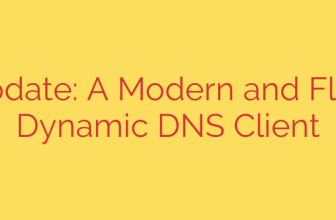
Phishing is Evolving: Are Your Defenses Ready for These New Tactics?
For years, the word “phishing” brought to mind a poorly worded email from a foreign prince asking for your bank details. While those classic scams still exist, the landscape of digital deception has become far more sophisticated. Cybercriminals have moved beyond the inbox, developing clever and targeted tactics that exploit the different ways we communicate and interact online.
Understanding these new vectors is the first step in protecting your personal and professional data. Attackers are no longer just casting a wide net; they are crafting personalized lures designed to catch you off guard. Here’s a breakdown of the evolving phishing tactics you need to be aware of today.
Smishing: The Threat in Your Text Messages
Smishing, or SMS phishing, uses fraudulent text messages to trick you into revealing sensitive information or downloading malware. Because we tend to trust text messages more than emails, these attacks can be highly effective.
Attackers often create a sense of urgency. You might receive a text claiming to be from your bank about a suspicious transaction, a shipping company with an update on a package, or even a government agency with an important alert. These messages almost always contain a link, urging you to click it to resolve the “problem.”
- How it works: A user receives a text message like, “Your FedEx package has a customs fee pending. To avoid delays, please update your payment details here: [malicious link].”
- Security Tip: Never click on links in unexpected text messages. If you think the message might be legitimate, navigate to the company’s official website or app directly to check on the status of your account or order.
Vishing: Deception Over the Phone
Vishing (voice phishing) is the practice of using phone calls to manipulate individuals into divulging confidential information. Scammers often use technology to “spoof” their caller ID, making it appear as if the call is coming from a trusted source like your bank, a tech support company, or the IRS.
These attackers are skilled social engineers. They may sound professional and authoritative, using fear or urgency to pressure you into acting quickly without thinking. They might claim your account has been compromised and ask for your password to “secure” it, or they may impersonate tech support and ask for remote access to your computer.
- How it works: You receive a call from someone claiming to be from Microsoft Support, stating your computer has been infected with a virus. They then guide you to install software that gives them control over your device.
- Security Tip: Be extremely skeptical of unsolicited phone calls. If you receive a suspicious call, hang up immediately. Call the organization back using an official phone number from their website to verify the request.
Quishing: The Danger in QR Codes
QR codes are everywhere, from restaurant menus to payment terminals. This convenience has also created a new attack vector: Quishing (QR code phishing). Cybercriminals can easily create malicious QR codes and place them over legitimate ones in public spaces.
When you scan a malicious QR code, it can direct you to a convincing but fake website designed to steal your login credentials or financial details. Since the destination URL is hidden within the code, it’s impossible to vet the link before scanning.
- How it works: A scammer places a sticker with a malicious QR code over the official code on a public parking meter. When a user scans it to pay for parking, they are taken to a fake payment portal that steals their credit card information.
- Security Tip: Before scanning a public QR code, physically inspect it for signs of tampering, like a sticker placed on top of the original. Use a secure scanner app that previews the URL before opening it in a browser.
Social Media Phishing: Lures in Your Feeds and DMs
Phishing attacks on social media platforms are becoming increasingly common. Scammers may create fake profiles impersonating a brand or a friend, run malicious ads, or send you direct messages (DMs) with dangerous links. These attacks often leverage information from your public profile to make the lure more personal and believable.
You might see a post for a “limited-time giveaway” from a major brand or receive a message from a “friend” whose account was compromised, asking for money or to click a link to a “funny video.”
- How it works: An attacker clones the profile of one of your friends and sends you a message: “I can’t believe I found this old photo of us! Check it out: [malicious link].”
- Security Tip: Treat links and unsolicited messages on social media with the same caution you would an email. Verify strange requests from friends through a different communication channel, like a phone call.
Business Email Compromise (BEC): The High-Stakes Impersonation
Perhaps the most damaging evolution is Business Email Compromise (BEC). This isn’t a broad, spam-based attack; it’s a highly targeted and researched scam aimed at organizations.
In a BEC attack, a cybercriminal impersonates a high-level executive (like the CEO or CFO) or a trusted vendor. They send a carefully crafted email to an employee in the finance or HR department, requesting an urgent wire transfer, a change in payroll bank details, or access to sensitive company data. Because the request appears to come from a position of authority, employees are often tricked into complying.
- How it works: The finance department receives an email that looks like it’s from the CEO, requesting an urgent, confidential wire transfer to a new vendor to close a deal. The email stresses secrecy and speed to prevent verification.
- Security Tip for Businesses: Implement a multi-step verification process for all financial transactions. This should include a verbal or in-person confirmation for any requests involving fund transfers or changes to payment information.
How to Stay Protected from Modern Phishing Attacks
While the tactics are evolving, the core principles of cybersecurity remain your strongest defense.
- Think Before You Act: The common thread in all these attacks is urgency. Scammers want you to act emotionally, not logically. Always take a moment to pause and think before clicking, scanning, or replying.
- Verify Independently: If you receive an unexpected request for information or money, verify it through an official, separate channel. Look up the company’s phone number yourself; don’t use the one provided in the suspicious message or call.
- Enable Multi-Factor Authentication (MFA): MFA is one of the most effective controls you can implement. Even if a scammer steals your password, MFA provides an essential second barrier to protect your account.
- Scrutinize the Details: Look for red flags like poor grammar, generic greetings, mismatched email addresses, or URLs that are slightly different from a legitimate domain.
- Keep Your Systems Updated: Ensure your operating system, browser, and security software are always up-to-date to protect against the latest known vulnerabilities.
The threat of phishing is more dynamic than ever. By staying informed and practicing digital vigilance, you can protect yourself, your data, and your organization from these sophisticated attacks.
Source: https://www.bleepingcomputer.com/news/security/why-attackers-are-moving-beyond-email-based-phishing-attacks/








